The June 9 auction of Old Masters | New Perspectives: Masterworks From The Alana Collection at Christie’s New York![]()
Orazio Gentileschi, The Madonna and Child. Oil on panel, 36 x 28 1⁄4 in. (91.4 x 73 cm.). Estimate: $4,000,000-6,000,000. © Christie's Images Ltd 2022. Pieter Brueghel The Younger, The Tower of Babel, oil on panel. Estimate: $1,500,000 – 2,500,000. © Christie's Images Ltd 2022. MASTERWORKS FROM THE ALANA COLLECTION FRA GIOVANNI DA FIESOLE, CALLED FRA ANGELICO (VICCHIO C. 1395-1455 ROME) Saint Dominic and the Stigmatization of Saint Francis tempera and gold on panel Price realized: $4,740,000 The June 9 auction of Old Masters | New Perspectives: Masterworks From The Alana C...
read moreChristie’s 20th / 21st Century: London / Paris Evening Sales on 28 JuneClaude Monet’s *Waterloo Bridge, effet de brume* will be a highlight of Christie’s 20/21 London to Paris sale series, offered in the 20th / 21st Century: London Evening Sale on 28 June. Depicting the Thames under an effervescent sunlit haze, *Waterloo Bridge, effet de brume* (1904, estimate: in the region of £24 million) comes from Monet’s monumental, landmark series entitled *Vues du Londres (Views of London), *which celebrates London’s unique character, architecture and ever-changing atmosphere*. *The artist focused on the play of light across the Thames through three princip...
read moreSerra/Seurat. Drawings*Museo Guggenheim Bilbao* *June 9 – September 6, 2022 * Read the report: "Guggenheim Bilbao: what is the relationship between contemporary American sculptor Richard Serra and neo-impressionist French painter Georges Seurat?" https://judithbenhamouhuet.com/guggen... Curators: Lucía Agirre, curator, Museo Guggenheim Bilbao, and Judith Benhamou, independent curator and art writer - Especially important in Seurat’s drawings is the handmade paper he uses, which he ‘brings to life’ by allowing it to absorb exactly the right amount of crayon to create the lights, volumes, and contrasts...
read more Golden Boy Gustav Klimt. Inspired by Van Gogh, Rodin, Matisse…![]()
*Gustav Klimt is known throughout the world for his paintings featuring gold and decorative ornaments, his universal symbolism and his pictures of strong women. But where did he find inspiration?* *The exhibition Golden Boy Gustav Klimt. Inspired by Van Gogh, Rodin, Matisse… offers visitors a remarkable opportunity to view Klimt’s art alongside work by the numerous artists who inspired him.* *Klimt’s oeuvre is rarely offered on loan, but this autumn, masterpieces from all over the world will be travelling to Amsterdam. This is the largest retrospective of Klimt’s work ever to be o...
read more 100 Great British Drawings![]()
*The Huntington Library, Art Museum, and Botanical Garden* *June 18 through Sept. 5, 2022* Samuel Palmer (1805–1881), Lonely Tower, ca. 1881. Opaque watercolor over traces of graphite on board, 7 x 9 5/8 in. Gilbert Davis Collection, The Huntington Library, Art Museum, and Botanical Gardens. “100 Great British Drawings,” a major exhibition at The Huntington Library, Art Museum, and Botanical Gardens, will trace the practice of drawing in Britain from the 17th through the mid-20th century, spotlighting The Huntington’s important collection of more than 12,000 works that represent t...
read more Andrew Wyeth: Life and Death![]()
*Colby College Museum of Art* * through October 16, 2022* John Olson's Funeral, 1945. Watercolor on paper. © 2021 Andrew Wyeth/Artists Rights Society (ARS). New Britain Museum of American Art, Charles F. Smith Fund, 1945.26 *Life and Death* shows the artist engaging with his own mortality A new exhibition in Waterville, Maine, at the Colby College Museum of Art, *Andrew Wyeth: Life and Death*, offers the first public presentation of a recently rediscovered series of drawings in which the artist Andrew Wyeth (1917-2009) imagined his own funeral. Created in the early 1990s, the dra...
read moreArt History News2 weeks ago
The Chrysler Museum of Art in Norfolk, VA., has been gifted 40 works of art from the Macon and Joan Brock Collection of American art![]()
John Singer Sargent (American, 1856 – 1925) Olives at Corfu, 1909. Oil on canvas. Promised Gift of the Macon and Joan Brock Collection to the Chrysler Museum of Art Winslow Homer (American, 1836 – 1910) Portrait of Elizabeth Loring Grant, 1866. Charcoal, chalk and pencil on paper. Promised Gift of the Macon and Joan Brock Collection to the Chrysler Museum of Art The Chrysler Museum of Art in Norfolk, VA., just announced Hampton Roads Philanthropist Joan Brock has made a $34 million gift to the museum, including 40 works of art from the Macon and Joan Brock Collection and two posi...
read moreArt History News2 weeks ago
Golden Boy Gustav Klimt. Inspired by Van Gogh, Rodin, Matisse...![]()
* Van Gogh Museum* *7 October 2022 till 8 January 2023* [image: 1 PB KLIMT Judith.jpg] Gustav Klimt: *Judith*, 1901, Öl und Blattgold auf Leinwand, 84 × 42 cm, Belvedere, Vienna. Photo: Belvedere, Vienna, Johannes Stoll *Gustav Klimt is known throughout the world for his paintings featuring gold and decorative ornaments, his universal symbolism and his pictures of strong women. But where did he find inspiration?* *The exhibition Golden Boy Gustav Klimt. Inspired by Van Gogh, Rodin, Matisse… offers visitors a remarkable opportunity to view Klimt’s art alongside work by the numero...
read moreArt History News2 weeks ago
The Woman in White: Joanna Hiffernan and James McNeill Whistler![]()
*National Gallery of Art, in Washington, DC, * *July 3–October 10,* 2022 James McNeill Whistler, Symphony in White, No. 1: The White Girl, 1861–1863, 1872, oil on canvas, overall: 213 x 107.9 cm (83 7/8 x 42 1/2 in.) National Gallery of Art, Washington, Harris Whittemore Collection When James McNeill Whistler (1834–1903) and Joanna Hiffernan (1839–1886) met in 1860, they began a close professional and personal relationship that lasted for over two decades. Featuring some 60 works including paintings, drawings, and prints, The Woman in White: Joanna Hiffernan and James McNeill Whis...
read moreArt History News2 weeks ago
ERNST WILHELM NAY RetrospectiveThe Hamburger Kunsthalle is dedicating a solo exhibition to Ernst Wilhelm Nay (1902–1968), the first retrospective in many years of the work of one of the leading painters of the twentieth century. Nay’s vibrant and colourful paintings form a bridge between art before and after the Second World War. His art merges elements of Expressionism, abstraction and gestural painting after 1945 and links German and international modernism. Based on around 120 paintings, watercolours and drawings, the show explores all phases of Nay’s complex oeuvre. The works span a period of fifty years, ...
read moreArt History News2 weeks ago
The Morgan Stanley Exhibition: Edvard Munch. Masterpieces from Bergen![]()
*The Courtauld Gallery* *27 May – 4 September 2022* A collection of significant paintings by Edvard Munch (1863-1944) have gone on show together for the first time in the UK in a new exhibition at The Courtauld. Also see newly edited: *Edvard Munch in Dialogue * The Morgan Stanley Exhibition: *Edvard Munch. Masterpieces from Bergen* showcases 18 seminal works by Munch on loan from KODE Art Museums in Bergen, Norway – home to one of the most important Munch collections in the world. The exhibition follows The Morgan Stanley Exhibition: *Van Gogh. Self-Portraits*, one of the most h...
read more The Fantasy of the Middle Ages![]()
*Getty Center, Los Angeles* *June 21 – September 11, 2022* Saint George and the Dragon, about 1450– 55, Master of Guillebert de Mets (Flemish, active about 1410–50). Tempera colors, gold leaf, and ink on parchment, 19.4 × 14 cm (7 5/8 × 5 1/2 in.). Getty Museum, Ms. 2 (84.ML.67), fol. 18vStolzenfels Castle, 1878 C. Hertel (German, active 1860s–1870s). Albumen silver print 9.8 × 14.8 cm (3 7/8 × 5 13/16 in.) Getty Museum 84.XP.1156.5Fairies in a Bird’s Nest, 1860. John Anster Fitzgerald (English, 1823–1906). Oil on canvas, 40.6 × 48.3 cm (16 × 19 in.) Fine Arts Museums of San Franc...
read more Love Life -David Hockney Drawings 1963-1977![]()
* The Holburne Museum* *27 May to 18 September 2022* [image: A line drawing by David Hockney featrung a book and a bottle of water on a table] *David Hockney, Vichy Water and ‘Howards End,’ Carennac, 1970 © David Hockney* *A sumptuous collection of rarely seen drawings by one of our most popular and recognisable artists goes on display in Bath this summer* *In 2017, prior to the opening of a retrospective exhibition at the Centre Pompidou in Paris, David Hockney (b.1937) painted the words ‘Love Life’ on the final wall of the show. Explaining his actions, he said: **“I love my w...
read more Rosa Bonheur![]()
*Museum of Fine Arts, * *18 May-18 September 2022* *Musée d'Orsay, * *October 18, 2022-January 15, 2023* *On the occasion of the bicentenary of Rosa Bonheur's birth in Bordeaux, the Musée des Beaux-Arts in her hometown and the Musée d'Orsay, Paris, are organizing a major retrospective of her work. The Château de Rosa Bonheur in Thomery (Seine-et-Marne), where the artist lived for nearly half a century, as well as the Departmental Museum of Barbizon painters are the exceptional partners of the exhibition. The bicentenary of Rosa Bonheur's birth is included in the calendar of F...
read more Christie's 26 May | Hong Kong Convention and Exhibition Centre Picasso, Monet- Pablo Picasso (1881-1973) *Buste d’homme dans un cadre* signed ‘Picasso’ (upper left); dated ‘29.3.69’ (on the reverse) oil on canvas 92 x 73 cm. (36 ¼ x 28 ¾ in.) Painted in Mougins on 29 March 1969 Estimate on Request Christie’s is pleased has announced Pablo Picasso’s *Buste d’homme dans un cadre* from the Estate of Sir Sean Connery, as a leading highlight of the 20 th and 21st Century Art Evening Sale to take place on 26 May at the Hong Kong Convention and Exhibition Centre (estimate on request; in the region of HK$150 million/ US$19 million). Offered fresh to the m...
read more Walter Sickert![]()
Tate Britain 28 April – 18 September 2022 [image: Walter Richard Sickert Brighton Pierrots 1915. Tate] Walter Richard Sickert *Brighton Pierrots *1915. Tate Tate Britain has opened London’s biggest retrospective of Walter Sickert (1860-1942) in almost 30 years. A master of self-invention and theatricality, Sickert took a radically modern approach to painting in the late 19th and early 20th centuries, transforming how everyday life was captured on canvas. This major exhibition features over 150 of his works from over 70 public and private collections, from scenes of rowdy music ...
read more Alex Katz![]()
*Museo Nacional Thyssen-Bornemisza* *11 June to 11 September 2022* Curator: Guillermo Solana For the first time in Spain the Museo Nacional Thyssen-Bornemisza is presenting a retrospective on the American painter Alex Katz (born New York, 1927), one of the most important figures in 20th-century American art who remains active today, aged ninety-four. The exhibition is curated by the museum’s artistic director Guillermo Solana and has benefited from the participation of the artist himself, who has closely followed the project’s development. Brought together for this event are 35 la...
read more At First Light: Two Centuries of Artists in Maine![]()
*Bowdoin College Museum of Art* *June 25 to November 6, 2022* The Family Evening , oil on canvas, ca. 1924, by Marguerite Zorach, American, 1887 – 1968. Gift of Dahlov Ipcar and Tessim Zorach, Bowdoin College Museum of Art, Brunswick, Maine .Wabanaki Birchbark Covered Box , 1834, birchbark and split spruce root, Ambroise St. Aubin family, known as the Bear Family Bowdoin College Museum of Art, Brunswick, MaineSunlight on the Coast , 1890, oil on canvas by Winslow Homer, American, 1836 - 1910. Tol e do Museum of Art, Gift of Edward Drummond Libbe Abraham Hanson , ca. 1828, oil o...
read more Picasso, Chagall, Miró: La Belle Époque on PaperWhy this era continues to fascinate contemporary audiences A glimpse into the important single-owner collection presented at Freeman's this May. This May marks the first public appearance of an important collection of artworks from a private New York family. The family’s interest in major European artists of the late 19th and early 20th centuries was piqued through contact with Herman C. Goldsmith, the reputable New York dealer and close friend of the collectors. Most of the works were directly purchased from the New York socialite and lovingly kept in their Manhattan apartment,...
read more The EY Exhibition: Cezanne![]()
*Tate Modern* *5 October 2022 – 12 March 2023* Paul Cezanne. The Basket of Apples, c. 1893. The Art Institute of Chicago, Helen Birch Bartlett Memorial Collection. In autumn 2022, Tate Modern will present a once-in-a-generation exhibition of paintings, watercolours and drawings by Paul Cezanne (1839-1906). Famously referred to as the “greatest of us all” by Claude Monet, Cezanne remains a pivotal figure in modern painting who gave license to generations of artists to break the rules. Created amid a rapidly accelerating world, his works focus on the local and the everyday, conce...
read more At the Dawn of a New Age: Early Twentieth-Century American Modernism![]()
*Whitney Museum of American Art* *May 7, 2022, to March 2023* Marguerite Zorach, Landscape with Figures, c. 1913. Gouache and watercolor on silk, 11 1/2 × 18 in. (29.2 × 45.7 cm. Whitney Museum of American Art, New York; purchase, with funds from Mary and Garrett Moran T.2022.201 Opening this weekend, *At the Dawn of a New Age: Early Twentieth-Century American Modernism*, an exhibition of over sixty works by more than forty-five artists that highlights the complexity of American art produced between 1900 and 1930, at the Whitney Museum of American Art in New York. The exhibition ...
read more Surrealism Beyond Borders![]()
*Eyal Ofer Galleries* *24 February 2022 – 29 August 2022* [image: Leonora Carrington Self-portrait c.1937–38. The Metropolitan Museum of Art, New York, The Pierre and Maria-Gaetana Matisse Collection, 2002 © 2021 Estate of Leonora Carrington / Artists Rights Society (ARS), New York. Image © Metropolitan Museum of Art.] Leonora Carrington Self-portrait c.1937–38. The Metropolitan Museum of Art, New York, The Pierre and Maria-Gaetana Matisse Collection, 2002 © 2021 Estate of Leonora Carrington / Artists Rights Society (ARS), New York. Image © Metropolitan Museum of Art. Surrealis...
read moreArt History News1 month ago
Georgia O’Keeffe, Photographer![]()
* Denver Art Museum* *July 3 through November 6, 2022* The Denver Art Museum (DAM) will bring a trove of newly identified photographs by groundbreaking artist Georgia O’Keeffe to Colorado in 2022 in an exhibition organized by the Museum of Fine Arts, Houston (MFAH) with the collaboration of the Georgia O’Keeffe Museum, Santa Fe. [image: Black and white photograph of a Jimsonweed flower] Georgia O'Keeffe, *Jimsonweed (Datura stramonium)*, 1964–68, black-and-white Polaroid, Georgia O’Keeffe Museum, Santa Fe. © Georgia O’Keeffe Museum. *Georgia O’Keeffe, Photographer*, reveals a new...
read more 'Annibale Carracci. The frescoes from the Herrera Chapel'![]()
*Museo del Prado, * * 8th March to 12th June 2022* In the first years of the 17th century, the Bolognese artist Annibale Carracci made a commitment with the noble Spanish banker Juan Enríquez de Herrera to paint a fresco in the chapel of his family, founded by Diego de Herrera, in the church of San Giacomo degli Spagnoli in Rome. The artist conceived the whole work, dedicated to the Franciscan saint Saint Didacus of Alcalà, and began the design of all the preparatory panels. Due to an illness, from 1605 onwards the project had to be delegated to Francesco Albani. During the...
read more Roy Lichtenstein: History in the Making, 1948–1960![]()
* Columbus Museum of Art* * March 4 through June 5, 2022* The first major museum exhibition to explore the early work of Roy Lichtenstein, one the most celebrated American artists of the 20th century, will be on view at the Columbus Museum of Art from March 4 through June 5, 2022. Roy Lichtenstein: History in the Making, 1948–1960 offers an in-depth view of the artist’s years in Columbus, Ohio, and includes approximately 90 works on loan from public and private collections in a range of media. With many works on public view for the first time, this unprecedented exhibition demo...
read more As They Saw It: Artists Witnessing War![]()
The Clark Art Institute’s latest exhibition presents four centuries of war imagery from Europe and the United States in As They Saw It: Artists Witnessing War, on view March 5–May 30, 2022. Spanning European and American art from 1520–1920, the exhibition of prints, drawings, and photographs shows how artists have portrayed periods of military conflict, bringing war off the battlefield and into the homes and lives of those who were often at a far remove from the scene. The exhibition is on view in the Eugene V. Thaw Gallery of the Clark’s Manton Research Center. Visual media have ...
read more Most popular posts all-time - Click on Title on graph page![]()
Dark Romanticism. From Goya to Max Ernst Posted by Jonathan Kantrowitz 7.25K Sotheby's Impressionist & Modern Art Evening Sale 14 May 2019 | New York Posted by Jonathan Kantrowitz 5.56K MAX BECKMANN Posted by Jonathan Kantrowitz 5.14K Grandma Moses at Auction Posted by Jonathan Kantrowitz 4.81K American Watercolor in the Age of Homer and Sargent Posted by Jonathan Kantrowitz 3.31K Georgia O’Keeffe: Abstraction Posted by Jonathan Kantrowitz 3.15K Seurat, Signac, Van Gogh - Ways of Pointillism Posted by Jonathan Kantrowitz 2.66K Frida Kahlo and Diego Rivera Posted by Jonath...
read more Matisse: The Red Studio![]()
*Museum of Modern Art* *May 1 – September 10, 2022 * * SMK – The National Gallery of Denmark in Copenhagen * * October 13, 2022, through February 26, 2023.* The Museum of Modern Art announces Matisse: The Red Studio, an exhibition focusing on the genesis and history of Matisse’s The Red Studio (1911), a painting that has remained among MoMA’s most important works since it was acquired in 1949. The large canvas depicts the artist’s studio filled with his paintings and sculptures, furniture, and decorative objects. This exhibition reunites the artworks shown in The Red Studio for ...
read more The Wyeth Foundation for American Art - more than 7,000 works of Andrew Wyeth![]()
xxx Andrew Wyeth, BLACK HUNTER, 1938, tempera on panel. Collection of the Wyeth Foundation for American Art © 2022 Andrew Wyeth/Artist Rights Society (ARS) Andrew Wyeth, FAMILY TREE STUDY, 1964, watercolor on paper. Collection of the Wyeth Foundation for American Art © 2022 Andrew Wyeth/Artist Rights Society (ARS) The Wyeth Foundation for American Art has established a collection-sharing arrangement providing for more than 7,000 works of Andrew Wyeth (1917-2009) to be maintained, conserved and exhibited for the general public at the Brandywine River Museum of Art and the Farnswort...
read more Christie’s Announces 20/21 Marquee Week Day Sales May 13- 16Christie’s Announces 20/21 Marquee Week Day Sales Post-War and Contemporary Art Day Sale | 13 May The Collection of Thomas and Doris Ammann Day Sale | 13 May Impressionist and Modern Works on Paper and Day Sale | 14 May The Surrealist World of Rosalind Gersten Jacobs and Melvin Jacobs | 14 May Picasso Ceramics | Online | 2 – 16 May [image: Property from the Family of Nina Van Rensselaer WAYNE THIEBAUD (1920 - 2021) Three Ice Cream Cones oil on canvas 12 x 15 in. (30.5 x 38.1 cm.) Painted in 1964. $2,500,000-3,500,000] Property from the Family of Nina Van Rensselaer WAYNE THIEBAUD (1...
read more The Bruce Museum in Greenwich, Conn., announced the promised gift of a major collection of European and American art![]()
Edward Hopper (American, 1882-1967), Bridle Path, 1939, oil on canvas, 23 3/8 x 42 1/8 in.*Courtesy of the Bruce Museum* The identities of the collectors of this transformative gift of 70 artworks—which includes Edward Hopper’s seminal final painting *Two Comedians* (1966)—have been guessed at, but not revealed, according to ARTnews. Edward Hopper (American, 1882-1967), Bridle Path, 1939, oil on canvas, 23 3/8 x 42 1/8 in.*Courtesy of the Bruce Museum* The identities of the collectors of this transformative gift of 70 artworks—which includes Edward Hopper’s seminal final pain...
read moreArt History News1 month ago
Impressionism: Franco-German EncountersWith a new presentation of over 80 works by French and German Impressionists, the Hamburger Kunsthalle is taking a fresh look at one of the defining art movements of modernism as a European phenomenon. Paintings, sculptures and pastels are presented in new constellations in five redesigned halls in the Lichtwark Gallery. Major works by Max Liebermann, Lovis Corinth and Max Slevogt, the »triumvirate of German Impressionism«, meet up here with French icons such as Édouard Manet, Auguste Renoir and Claude Monet. The show also brings in artists who have not been presented at the Ham...
read moreArt History News1 month ago
Sotheby's Modern Evening sale on May 17.![]()
The Toledo Museum of Art Will Deaccession Three Impressionist Paintings That Could Fetch More Than $60 Million at Sotheby’s [image: Paul Cézanne, Clairière (The Glade) (ca. 1895). Courtesy of Sotheby's.]Paul Cézanne, *Clairière (The Glade)* (ca. 1895). Courtesy of Sotheby's. When Steve Cohen’s 1932 Picasso comes up for sale at Sotheby’s on May 17, it will be joined on the auction block by three Impressionist paintings from the collection of the Toledo Museum of Art (TMA), which could net as much as $64 million—the largest institutional deaccession of the season. The consignment in...
read moreArt History News1 month ago
Christie’s 20th Century Evening Sale May 12 - Additional works![]()
Pissarro seized by Nazis to be sold at auction after families settle In an undated image provided via Christie’s, “The Anse des Pilotes, Le Havre,” by Camille Pissarro, painted in 1903. A Pissarro painting that was at the center of a dispute between the heirs of a Jewish couple whose art collection was seized by the Nazis before World War II and a Jewish family who bought it in 1994 will be sold at auction after the two sides reached agreement. Via Christie’s via The New York Times. The details of the settlement were not disclosed, but Christie’s has placed an estimate of $1.2 ...
read moreArt History News1 month ago
Diego Rivera’s America![]()
* San Francisco Museum of Modern Art * * July 16, 2022–January 2, 2023* Diego Rivera, Flower Seller, 1926; Honolulu Museum of Art, gift of Mr. and Mrs. Philip E. Spalding, 1932; © Bancode México Diego Rivera & Frida Kahlo Museums Trust, Mexico, D.F. / Artists Rights Society (ARS), New York; photo: courtesy Honolulu Museum of Art The San Francisco Museum of Modern Art (SFMOMA) will present *Diego Rivera’s America**,* the most in-depth examination of the artist’s work in over two decades. *Diego Rivera’s America* brings together more than 150 of Rivera’s paintings, fresc...
read moreArt History News1 month ago
Wealth and Beauty: Pier Francesco Foschi and Painting in Renaissance Florence![]()
Pontormo, del Sarto, Foschi. One of these names is much less of a household name when it comes to 16th-century Italian art, but the Georgia Museum of Art at the University of Georgia aims to change that this January. “Wealth and Beauty: Pier Francesco Foschi and Painting in Renaissance Florence,” organized by Nelda Damiano, the museum’s Pierre Daura Curator of European Art, is the first exhibition dedicated to Pier Francesco Foschi (1502 – 1567), a highly prolific and fashionable Florentine painter whose career spanned nearly five decades. Despite his success at the time, he fell i...
read moreArt History News1 month ago
Bernini and the Roman Baroque: Masterpieces from Palazzo Chigi in Ariccia,![]()
* The Museum of Fine Arts, St. Petersburg (MFA)* *February 12 through May 8, 2022* At the dawn of the seventeenth century, a new generation of artists emerged in Rome that would develop an artistic movement known as the Baroque period. Following the Renaissance, this eccentric new style spread rapidly through Europe and reached to the Americas. *Bernini and the Roman Baroque: Masterpieces** from Palazzo Chigi in Ariccia* explores the genesis of this artistic movement. Through a selection of works from 40 artists, including 10 works by Gian Lorenzo Bernini, this exhibition illum...
read moreArt History News1 month ago
Sotheby's Modern Evening Auction on 27 April Hong Kong![]()
Dora Maar was a commanding presence and this portrait by Picasso conveys her beauty and intellect to powerful effect. Painted in the French tricolor of red, white and blue – and prominently signed and dated – it captures a real sense of Maar’s personality and speaks eloquently of Picasso’s feelings. Interest in Picasso has been surging among Asian collectors, as we witnessed last year with two consecutive auction records for the artist in Asia, most notably for a portrait of Picasso’s second wife Jacqueline Roque. This season we are thrilled to present a museum-quality work that r...
read moreArt History News1 month ago
Heritage May 10 American Art Signature® AuctionHeritage Auctions has announced one of the most comprehensive – and jubilant – American art events in recent memory. In the words of Senior Vice President Aviva Lehmann, the May 10 American Art Signature® Auction, featuring 150 works, is “a museum-quality auction showing off our strength and ability to curate a perfect sale that covers every genre of American Art.” The event, which is now open for bidding, spans the breadth of American art, from Ashcan to Impressionism, Regionalism to Hudson River, illustration to sculpture. Here, collectors are treated to everything from Rembran...
read moreArt History News1 month ago
Distinguished American Paintings![]()
[image: QUESTROYAL] Questroyal Fine Art 903 Park Avenue (at 79th Street) Third Floor New York, NY 10075 (212) 744-3586 gallery@questroyalfineart.com questroyalfineart.com [image: Paintings distinguished by provenance and history] [image: Autumn Landscape with Cattle, 1879 by Jasper Francis Cropsey (1823–1900)] [image: Fire Opals (Lady in Furs: Portrait of Mrs. Searls), 1912 by Childe Hassam (1859–1935)] [image: Palm Tree, Barbados by Joseph Stella (1877–1946)] [image: Twilight in the Wilderness, 1864 by John Williamson (1826–1885)] [image: Tug Boats, 1937 by Reginald Marsh (1898–1954)]
read moreArt History News1 month ago
Christie's New York 20th Century Evening Sale May 12 2022 - Updated![]()
Claude Monet, (1840-1926), Champ d'avoine et de coquelicots, signed and dated 'Claude Monet 90' (lower right), oil on canvas, 25.5/8 x 36.1/4 in. (65 x 92.1 cm.) Painted in Giverny in 1890. © Christie's Images Ltd 2022. Claude Monet’s Champ d’avoine et de coquelicots, (estimate: $12 million – 18 million) will highlight the 20th Century Evening Sale during the Spring Marquee Week of sales. The 1890 masterwork comes to Christie’s from an Important Private French Collection along with two wonderful examples from the late 19th century offered in the Impressionist and Modern Art Day Sale...
read moreArt History News1 month ago
Scenes of Transcendent Beauty: Thomas Moran’s Yellowstone![]()
Thomas Moran (England, 1837–1926), Hot Springs of Gardiner's River, Yellowstone Park, 1871. Watercolor and graphite on paper. 9 7/8 x 13 inches. On loan from the Yellowstone Heritage and Research Center. *The National Museum of Wildlife Art (NMWA) will open Scenes of Transcendent Beauty: Thomas Moran’s Yellowstone on May 14, 2022, an exhibition celebrating Yellowstone National Park’s 150th Anniversary this year. The exhibition will be on view through August 23, 2022.* *Scenes of Transcendent Beauty* explores the impact of Yellowstone on Thomas Moran and of Moran on Yellowstone. ...
read more Matisse in the 1930s![]()
*Philadelphia Museum of Art, * *October 19, 2022–January 29, 2023 * *Paris, Musée de l’Orangerie, * *February 27, 2023–May 29, 2023 * *Musée Matisse Nice, * *June 23, 2023–September 24, 2023* [image: Henri Matisse "Large Reclining Nude" 1935. 26 1/8 × 36 3/4 inches (66.4 × 93.3 cm). Oil on canvas Baltimore Museum of Art: The Cone Collection, formed by Dr. Claribel Cone and Miss Etta Cone of Baltimore, Maryland, 1950.258. © 2022 Succession H. Matisse/Artists Rights Society (ARS), New York.] Henri Matisse "Large Reclining Nude" 1935. 26 1/8 × 36 3/4 inches (66.4 × 93.3 cm). Oil
Donatello, the RenaissanceFrom 19 March to 31 July 2022 the Fondazione Palazzo Strozzi and the Musei del Bargello host *ç*, an historic, once-in-a-lifetime exhibition which sets out to reconstruct the astonishing career of one of the most important and influential masters of Italian art of any age, juxtaposing his work with masterpieces by artists who were his contemporaries such as Brunelleschi, Masaccio, Andrea Mantegna, Giovanni Bellini, Raphael and Michelangelo. Curated by Francesco Caglioti, professor of medieval art history at the Scuola Normale di Pisa, the exhibition showcases over 130 works of...
read moreArt History News2 months ago
An American Place![]()
*Palmer Museum of Art* January 29 - May 1, 2022 SPECIAL EXHIBITIONS GALLERY, SECOND FLOOR The story of the coming of age of American art is filled with alliances and ruptures, expatriates and immigrants, transatlantic dialogues and the search for an authentic aesthetic rooted in America. *An American Place* examines the complexity of this national narrative, highlighting a century of American art from the post-Civil War decades through the Civil Rights era. The exhibition includes paintings, works on paper, and sculptures drawn from the recent bequest of collectors and philanthro...
read more Canaletto’s Venice Revisited![]()
*Canaletto’s Venice Revisited *is now open at the National Maritime Museum. This major exhibition displays the complete set of 24 Venetian views painted by Canaletto in the 1730s. The works, from the world famous collection at Woburn Abbey, form the largest single commission the Italian artist ever received. *Canaletto’s Venice Revisited *reassesses Canaletto at the height of his career, looking beyond the broad views he is famous for to also closely examine the features that bring his Venice to life. Don’t miss this rare opportunity to see this collection up close at the Natio...
read more
Alone Together: Encounters in American Realism![]()
- *Opening Sunday, May 29 at The Westmoreland Museum of American Art*, in Greensburg, Penn., the exhibition *Alone Together: Encounters in American Realism* brings together works of art separated by almost a century to consider how they are bound together by the shared experience of living and working in difficult times. Edward Biberman (1904–1986), Tear Gas and Water Hoses, 1945, Oil on canvas, 29 x 36 inches, The Schoen Collection, American Scene Painting The exhibition is guest curated by Alex J. Taylor, Assistant Professor in the Department of History of Ar...
read moreArt History News2 months ago
Completed Eastman Johnson Catalogue Raisonné,![]()
Eastman Johnson, Self-Portrait, c. 1850, National Gallery of Art, Washington, District of Columbia, John Davis Hatch Collection (1979.20.73). The National Academy of Design is pleased to announce the publication of the *Eastman Johnson Catalogue Raisonné: Drawings & Prints* on April 5, the anniversary of the artist’s death. The addition of this section completes the catalogue raisonné of American artist Eastman Johnson, following the section dedicated to his paintings that was first published online in July 2021. The Eastman Johnson Catalogue Raisonné (EJCR) is founded and dire...
read more Sotheby’s Modern Evening Auction on 17 May: Claude Monet , Pablo Picasso , Philip Guston![]()
Picasso’s Rapturous 1932 Homage to Marie-Thérèse Walter Painted in April 1932, 90 years ago to the month, *Femme nue couchée* is one of Pablo Picasso’s most monumental and uninhibitedly sensual portrayals of Marie-Thérèse Walter. Appearing at auction for the first time, the large-scale painting is poised to achieve in excess of $60 million at Sotheby’s Modern Evening Auction on 17 May, making it one of the most valuable portraits of Marie-Thérèse Walter ever offered at auction. Marie-Thérèse was the inspiration for many of Picasso’s greatest works, with 1932 - the year in which h...
read more





















,%20At%20the%20Deathbed,%201895,%20KODE%20Art%20Museums,%20Bergen,%20Norway%20.jpg)
,%20Bathing%20Boys,%201904-1905,%20KODE%20Art%20Museums,%20Bergen,%20Norway%20.jpg)
,%20Children%20Playing%20in%20the%20Street%20in%20A%CC%8Asga%CC%8Ardstrand,%201901-1903,%20KODE%20Art%20Museums,%20Bergen,%20Norway%20.jpg)
,%20Evening%20on%20Karl%20Johan,%201892,%20KODE%20Art%20Museums,%20Bergen,%20Norway%20.jpg)
,%20Four%20Stages%20of%20Life,%201902,%20KODE%20Art%20Museums,%20Bergen,%20Norway%20.jpg)
,%20House%20in%20Moonlight,%201893,%20KODE%20Art%20Museums,%20Bergen,%20Norway%20.jpg)
,%20Inger%20in%20Sunshine,%201888,%20KODE%20Art%20Museums,%20Bergen,%20Norway%20.jpg)
,%20Man%20and%20Woman,%201898,%20KODE%20Art%20Museums,%20Bergen,%20Norway%20.jpg)
,%20Marie%20Helene%20Holmboe,%201898,%20KODE%20Art%20Museums,%20Bergen,%20Norway%20.jpg)
,%20Melancholy,%201894-1896,%20KODE%20Art%20Museums,%20Bergen,%20Norway%20.jpg)
,%20Moonlight%20on%20the%20Beach,%201892,%20KODE%20Art%20Museums,%20Bergen,%20Norway%20.jpg)
,%20Nude%20in%20Profile%20Towards%20the%20Right,%201898,%20KODE%20Art%20Museums,%20Bergen,%20Norway%20.jpg)
,%20Self-Portrait,%201909,%20KODE%20Art%20Museums,%20Bergen,%20Norway%20.jpg)
,%20Spring%20Day%20on%20Karl%20Johan,%201890,%20KODE%20Art%20Museums,%20Bergen,%20Norway%20%20copy.jpg)
,%20Summer%20Night.%20Inger%20on%20the%20Beach,%201889,%20KODE%20Art%20Museums,%20Bergen,%20Norway%20.jpg)
,%20Woman%20in%20Three%20Stages,%201894,%20KODE%20Art%20Museums,%20Bergen,%20Norway%20.jpg)
,%20Youth,%201908,%20KODE%20Art%20Museums,%20Bergen,%20Norway%20.jpg)






















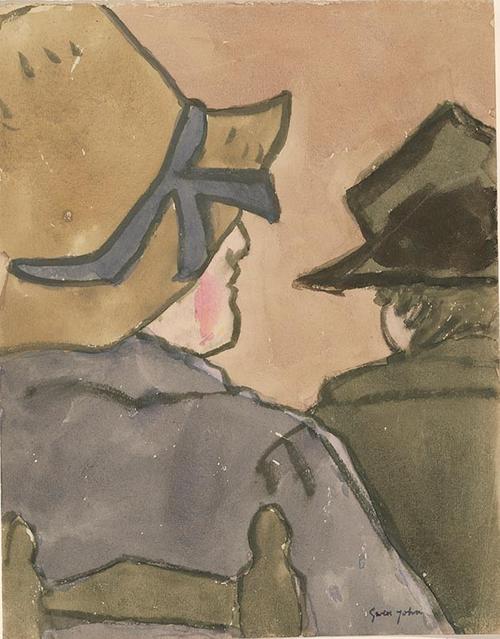
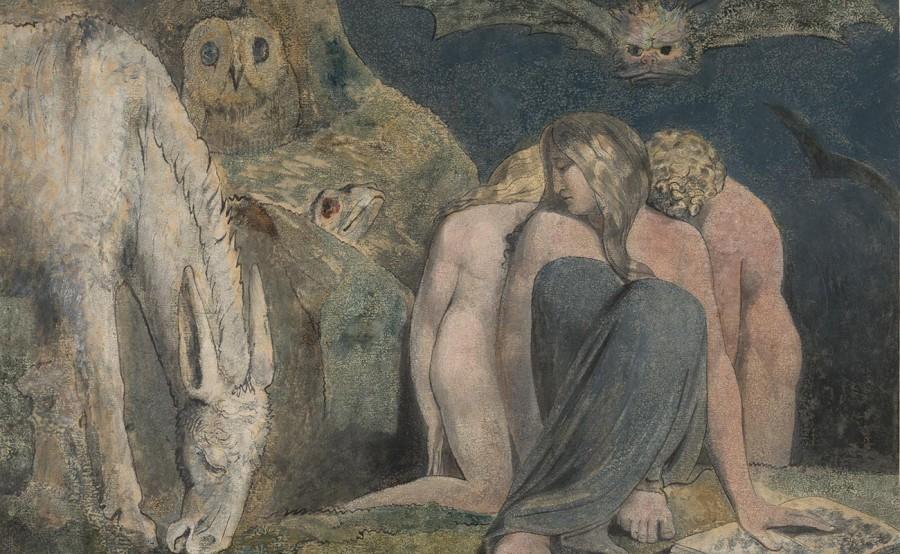
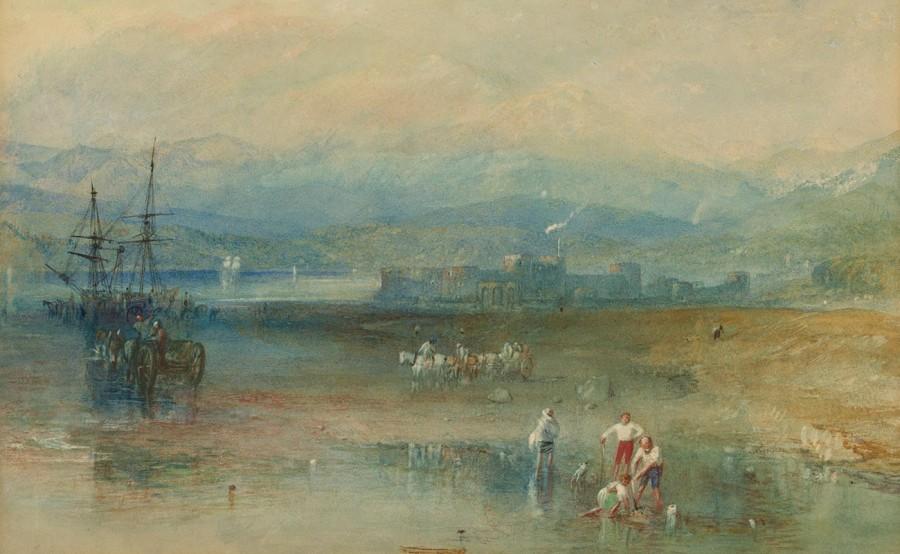
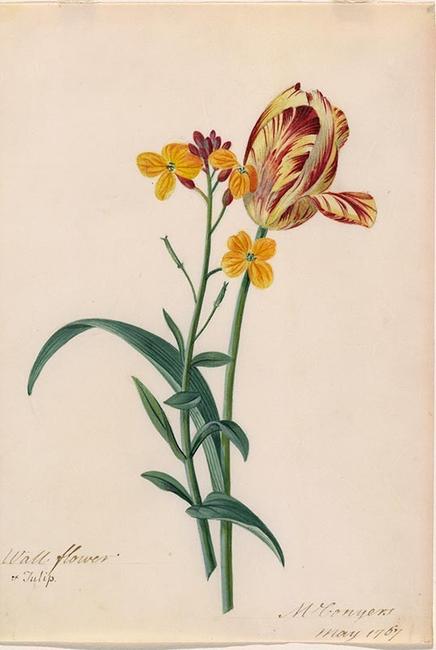
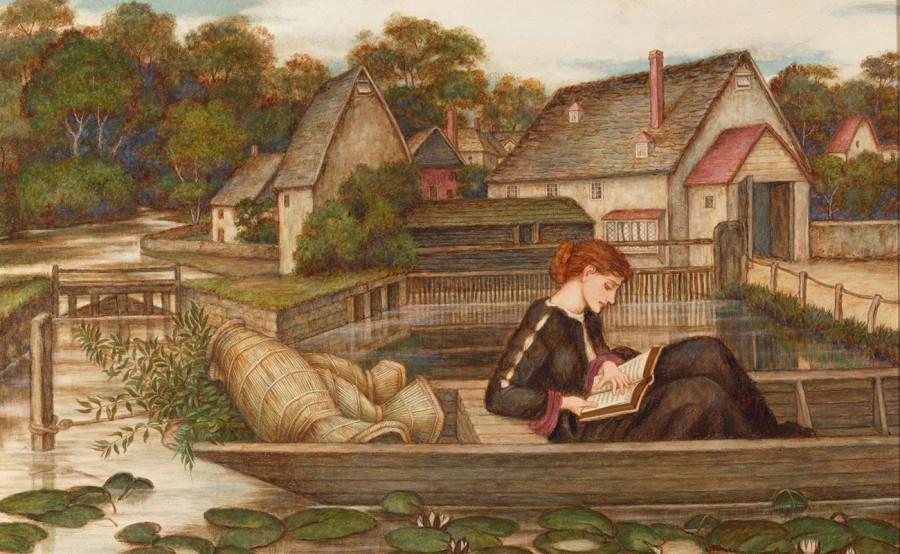
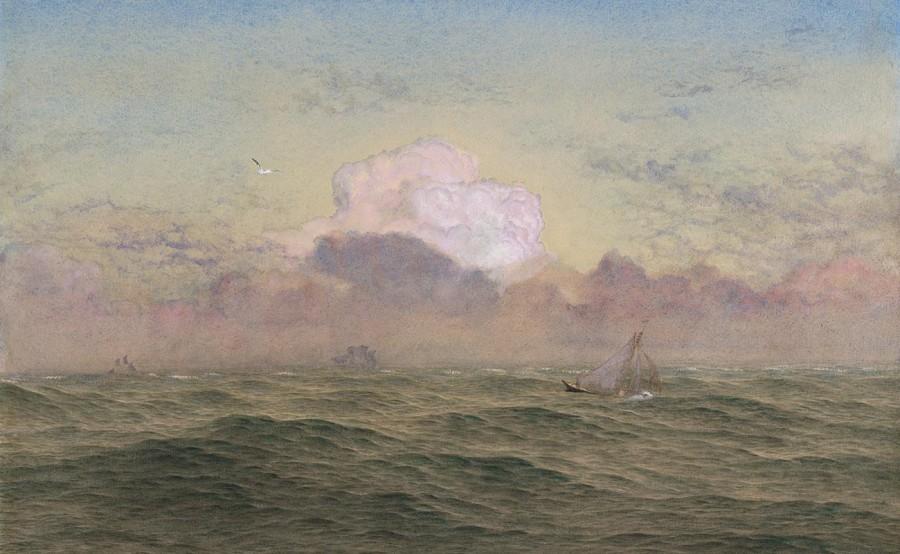


.jpg/1280px-Claude_monet_waterloo_bridge_effet_de_brouillard011136).jpg)



.jpg)




































.jpg)
.jpg)






















